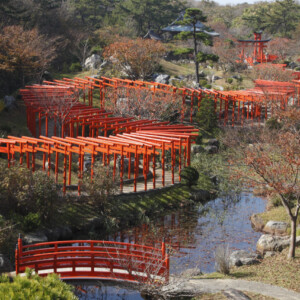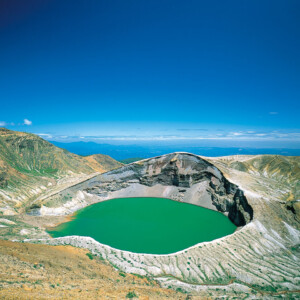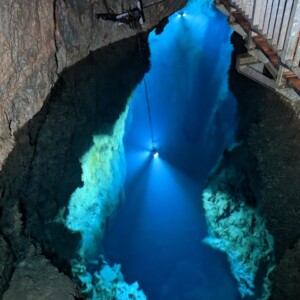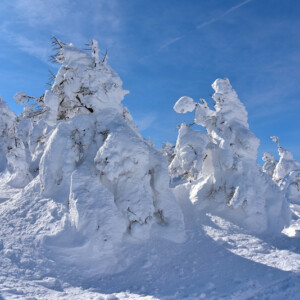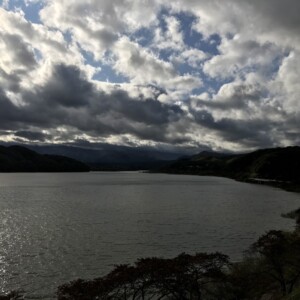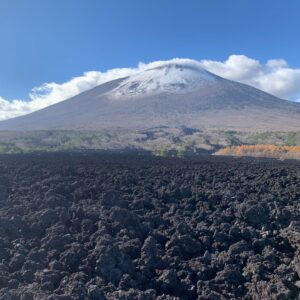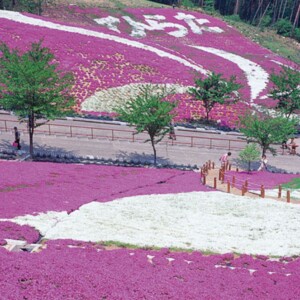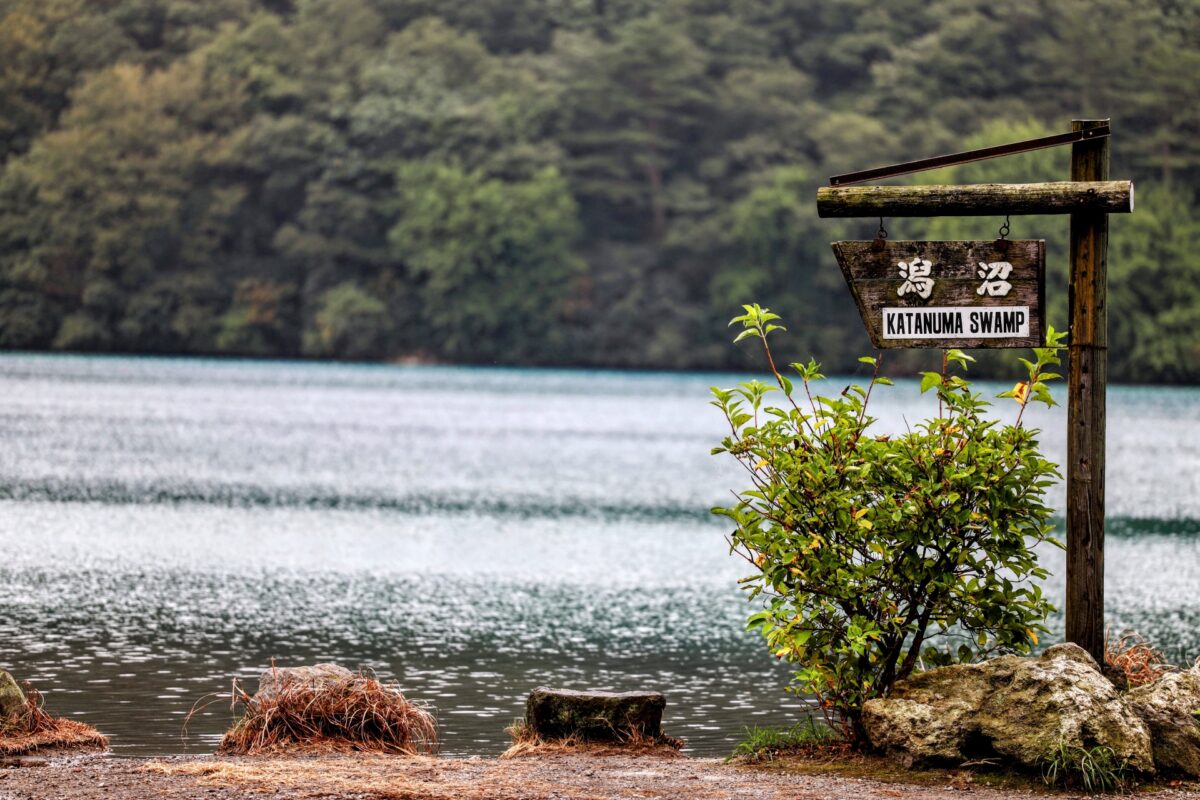
What is Katanuma? |A "super acidic" lake in Naruko Onsen, where fish cannot live [Miyagi Prefecture]
table of contents
Katanuma, located in Naruko Onsen Village in Osaki City, Miyagi Prefecture is known as a highly acidic crater lake, which is very rare in Japan The emerald green lake surface fascinates visitors. Behind this beauty is hidden by the incredible natural phenomena that gush out from within the earth.
The origin of Katauma, born from volcanic activity
Katauma is a small lake with a circumference of about 1.3km, about 1km southeast of Naruko Onsen Station. It was formed about 1,200 years ago. It is thought to be Caldera Lake " or " Lake Mar which is formed by accumulating water at the crater site created by the activity of Naruko Volcano
The lake is approximately 16 to 21 meters deep and is a closed-type lake with no river flowing from the outside. For this reason, the environment is strongly affected by volcanic gases and groundwater that spring from underground.
A highly acidic lake that is rare in the world
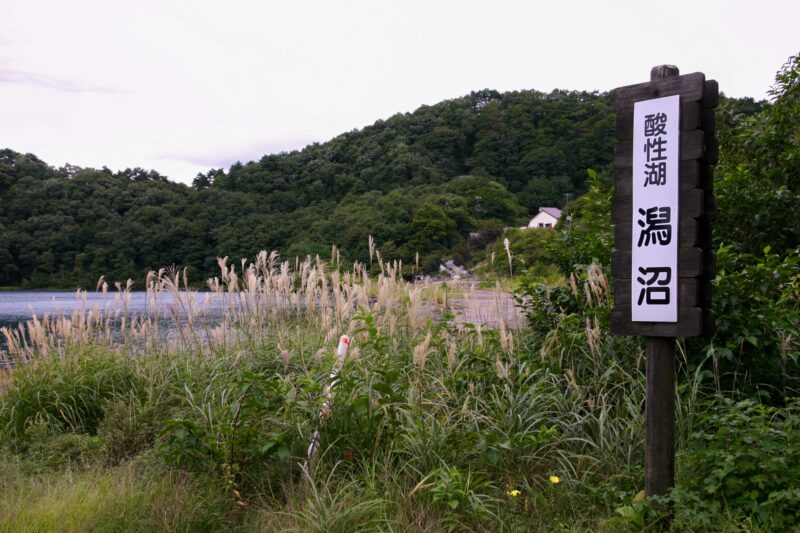
The biggest feature of Katauma is its extremely acidity .
In the 1930s, an extreme pH of 1.4 was recorded, and was also known as the "highest acidic lake in Japan." However, several latest surveys have reported that the current pH is generally around 2.2 to 2.6 due to environmental changes and changes in water quality over time.
Although it has a pH of 2, it is highly acidic, far exceeding the average acid rain (pH 4.5-5). It is also very irritating to human skin, and is not recommended to contact the lake.
Why is it so acidic?
Volcanic gases (mainly hydrogen sulfide) still constantly erupt from the lake bottom, which oxidize in the water to form sulfate ions (SO₄²⁻), keeping the water highly acidic. Recent surveys have shown that the concentration of sulfate ions in Katauma is 240-250 mg/L, which is equal to or higher than the acidic springs found in hot springs.
Additionally, the concentration of iron and chloride ions is high, and the lake water is heavier than it looks and is highly corrosive, so caution is required.
Can't fish live? A lake with a special ecosystem
Of course, fish cannot live in such extreme environments. It is too acidic and is a deadly environment for most organisms.
it is known that Katauma is home to acid-resistant insects such as " San Midori These organisms form their own ecosystems and are also the subject of research by scientists.
Color change and seasonal expressions
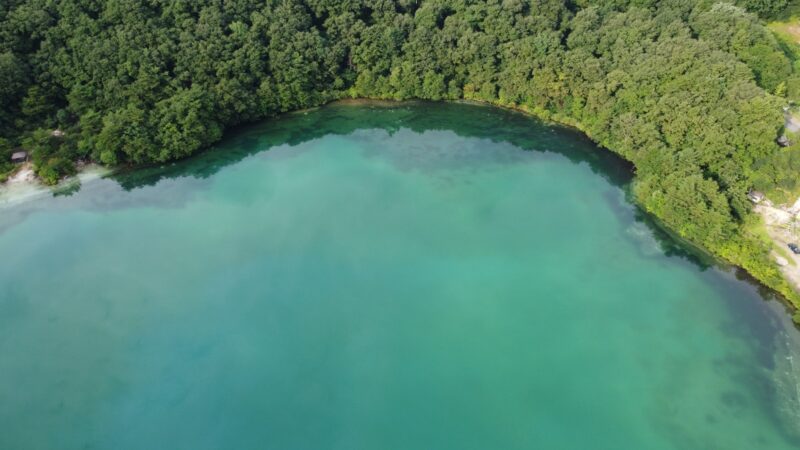
Katauma is also known for changing the colour of the lake depending on the season and weather. It shines bright emerald green on clear weather, but also appears to have a dark blue-green or greyish color in cloudy and autumn foliage.

In addition, the acidity and turbidity of the lake can change slightly due to the inflow of melted snow in the spring. It is also interesting that the lake has a two-layered " thermlink" layer
The accuracy of the expression pH2
It is sometimes referred to as a "super-acid lake with pH 2" on the Internet and tourist brochures, but this is just an approximate expression . In actual latest observations, pH 2.2 to 2.6 is the main range, and fixing it to "pH 2" is strictly a bit inaccurate.
Nonetheless, Katauma's acidity is by far the most popular in Japan, and remains a very rare presence worldwide.
Caution and etiquette
Currently, you can drive to the lakeside and the promenade is well-maintained, but avoid direct contact or entering the lake water. Also, volcanic gases are affected in the area, so be careful when staying for long periods of time or in bad weather.
Katauma is a valuable place where you can experience the mystery of nature, which combines beauty and harshness. This special environment teaches us the geological dynamism of Japan, a volcanic powerhouse.
Katauma <Information>
- Name: Katanuma
- Address: Naruko Onsen Yumoto, Osaki City, Miyagi Prefecture 989-6823
- Phone number: -
- Official URL: Osaki City Official Website – Katauma



![Scary and slightly sad stories... "Michinoku Otogi Kaido" with many stories left behind [Shichigasyu-cho, Shiraishi City, Miyagi Prefecture] Fairytale images](https://jp.neft.asia/wp-content/uploads/2023/04/be73b392233d2fe609797e999f8ca547-1-150x150.jpg)
![Kurikoma foot Geopark learned from large-scale landslide disasters [Miyagi Prefecture] Autumn leaves of Mt. Kurikoma](https://jp.neft.asia/wp-content/uploads/2023/08/22090138_m-150x150.jpg)
![Demon's Jigokudani Promenade! The geyser of the steam is truly a hellish sight! ? [Miyagi Prefecture] 5148713_m](https://jp.neft.asia/wp-content/uploads/2023/08/5148713_m-150x150.jpg)
![The timber rocks in Shiraishi Obara are natural phenomena, and are spectacular spots with columnar joints! [Miyagi Prefecture] FE8E1C5D-891F-4A2B-B0BB-BB4536BF6858_105_c](https://jp.neft.asia/wp-content/uploads/2023/07/FE8E1C5D-891F-4A2B-B0BB-BB4536BF6858_1_105_c-150x150.jpeg)
![[Miyagi Prefecture] Remember the Miyagi dialect! “So,” “suddenly,” “good morning socks”? good morning socks](https://jp.neft.asia/wp-content/uploads/2023/09/fashion_kutsushita_ana-150x150.jpg)
![The place you should not come and the phantom checkpoint "Nakura no Seki" written in waka poetry [Fukushima Prefecture] 0438-016](https://jp.neft.asia/wp-content/uploads/2022/11/0438-016-150x150.jpg)
![[Tohoku] Where should we go during Golden Week in 2023? How about visiting zoos and aquariums in Tohoku? 26245129_m](https://jp.neft.asia/wp-content/uploads/2023/04/26245129_m-150x150.jpg)
![[Serialization: Following the narrow path in the back part 2] After arriving in Miyagi Prefecture, Basho and Sora aim for Sendai, the capital of forests. Oku no Hosomichi 2](https://jp.neft.asia/wp-content/uploads/2023/09/f05201ee29d975b84ec437a8b76f2b98-150x150.jpg)
